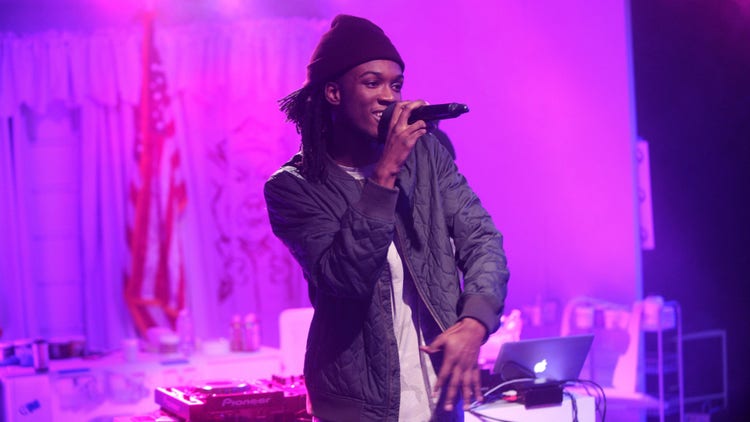
By Tiffany Walden
It’s sometimes easy not to feel a sense of pride in being from Chicago’s West Side. The years-long political neglect of the mostly black enclaves reaching west from Western Avenue to Austin Boulevard is apparent in the boarded-up, dilapidated buildings and homes lining its streets. One particular stretch, the shopping center along Madison Street in West Garfield Park, has been in the same state of disrepair since the 1968 riots tore through the area after the murder of Martin Luther King Jr.
This neglect is reflective in music, as well. One of the most influential and popular names in hip-hop, Chicago’s own Kanye West, hails from the South Side. And now, his best prodigy, Chance the Rapper, carries the South Side on his back. Their songs praise the South Side, offering representation outside of the murder rates inextricably linked to the city’s black folk.
West Siders, however, don’t have an identity outside of gangs, violence, and drugs. Our superstars — rappers Twista and Lupe Fiasco, alongside groups Crucial Conflict and Do or Die — are long gone from the music spotlight. We’ve paled in comparison musically — despite the short-lived Bop era — to our South Side neighbors for at least a decade.
But then Saba dropped his EP Bucket List Project, and, in his lyrics, evoked the same feelings that I’ve shared with friends and strangers when I tell them that I was born and raised on the West Side of Chicago.
Both death and hope fuel Saba’s latest work, “Bucket List Project”
“I’m from the part of the city that they don’t be talking about,” he spits on the fifth track, “Westside Bound 3.” The song instantly became my anthem.
Then, there’s Twista on “GPS.” Twista and I share the same childhood stomping grounds, K-Town in North Lawndale.
Then, Saba brings up the “liquor store on Cicero” on “Church/Liquor Store.” Shoot, which one? My friends and I, also bribed strangers to buy us Boone’s Farm from the liquor stores on Cicero in high school.
There’s other mentions of Division Street, where I spent the night with my godcousins during the nights our parents came together for card games (Tonk, Pitty Pat, Spades, and Bid Whist) and Austin Boulevard, where I also went to Saint Catherine of Siena Saint Lucy for grammar school — just like Saba.
The world Saba portrays on the Bucket List Project is more than familiar. It’s home for me and the scores of other millennials who grew up on the West Side. And, most important, it’s the positive representation the West Side has been missing. Saba puts us back on the map, giving us something relatable to latch on to. Now we, too, have something to offer outside of the grim crime statistics.